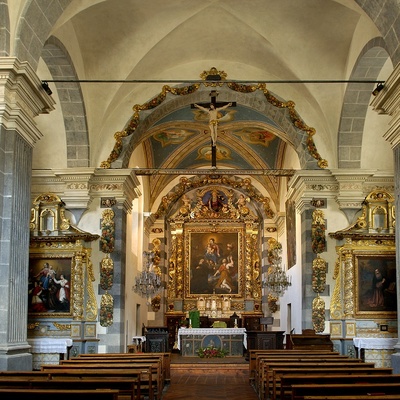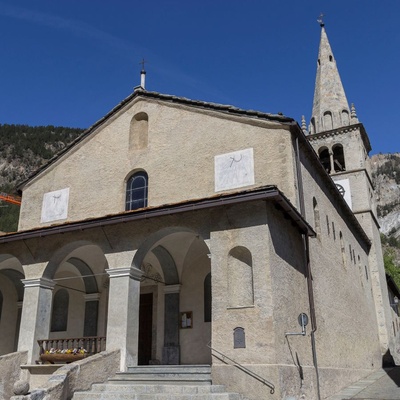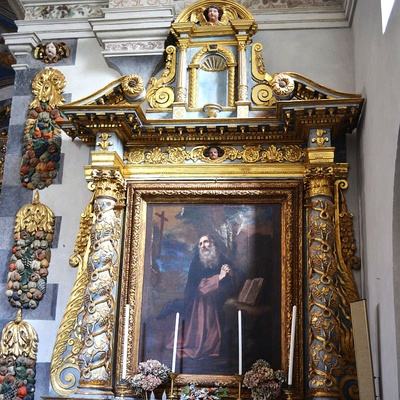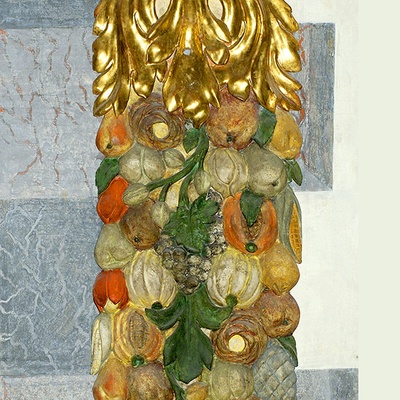
Frazione Melezet, 10052 Bardonecchia
The parish church of Sant’Antonio Abate stands in the historic center of the village of Melezet, marked by the bell tower for those traveling the road leading to the capital.
The parish of Melezet was founded in 1487 as a separation from Bardonecchia. That year also saw the beginning of construction
of the parish church, which is not the current one. The original building was heavily damaged by a fierce fire that, in 1694, destroyed much of the village. A new church was therefore necessary,
for the construction of which many materials from the old one were reused, including the spire of the bell tower. The new construction arose not far from the previous one, on land specifically donated by a local widow.
The main façade is characterized by a portico, which can be accessed via two symmetrical stone stairs with a limestone balustrade. The façade is completed by a gabled prospect, with an arched window
flanked by two sundials and an empty niche, originally containing the wooden statue of the Madonna and Child, now preserved at the Alpine Religious Art Museum also in Melezet.
Additionally, the church has a basement area, formerly used for winter burials, accessed by a small wooden door located between the two external symmetrical stairs.
The bell tower features the architectural characteristics of Delphine Romanesque. The base,
rather high and compact, is marked only by some narrow slits and is concluded by a rounded stone cornice, above which two more levels develop. The first level has three double-lancet windows, with a column and stone capital, while the second level has similar double-lancet windows and is concluded by a cornice on stone brackets. The particularly slender octagonal stone spire has eight large openings (sealed in this case) at the base and four smaller ones towards the top. The four acroteria at the base corners are replaced by intricately turned pinnacles, signs of late Baroque renovation. Inside, the building has a three-nave plan ending in a rectangular apse. The entire structure is dominated by wooden carving, profusely found not only on the retable of the main altar and the side altars but also in the naturalistic relief decorations that follow the lines of the arches and pilasters in the presbytery area. The retable of the main altar was commissioned in 1698 by the then-curate, Jerome André, to a workshop in Haute-Maurienne: there are clear similarities with similar works by Sebastien Rosaz for the Rosary and St. Anthony Abate altars in Termignon. The painting that adorns the main altar represents the Madonna and Child with St. Anthony Abate and an angel.
It was donated by Jean Agnés des Geneys in 1698 and is attributed to the Maurienne workshop of the Dufour brothers (Gabriel?). The same painters probably provided the paintings for the side altars, which come from the original church. Among them, the altar of St. Anthony Abate is likely the work of woodcarver Jacques Jesse of Embrun, active in the late Seventeenth century in the upper valley. Notable among the paintings are also the Assumption of the Virgin, painted by Paolo Gerolamo della Croce in 1619, and the panel of the Crucifix with Saints Charles Borromeo and Bernardino of Siena, dating to the third quarter of the Seventeenth century and attributed to the hand of Jacques Roux.
Finally, worth noting is the stone baptismal font, dating to the early Seventeenth century and attributed to the local Roude workshop.






























